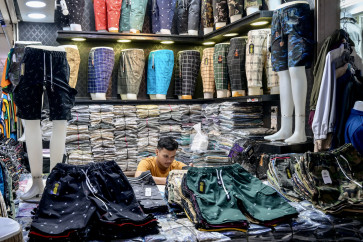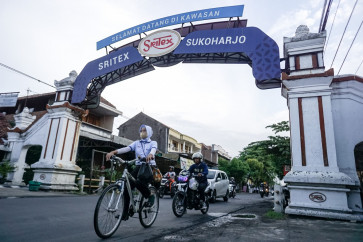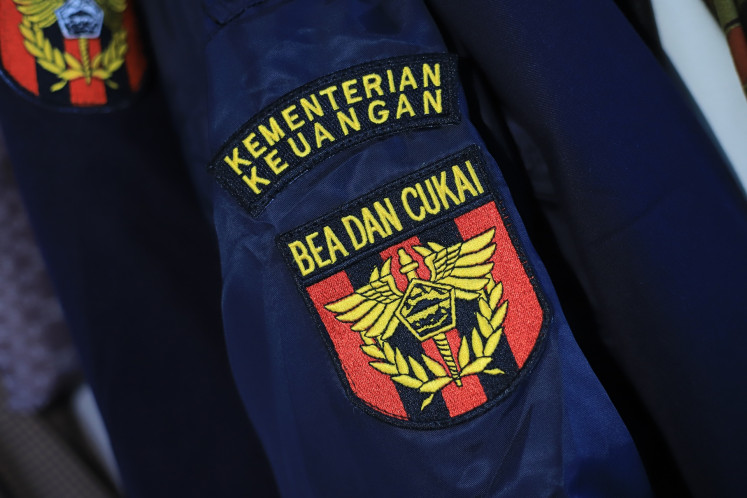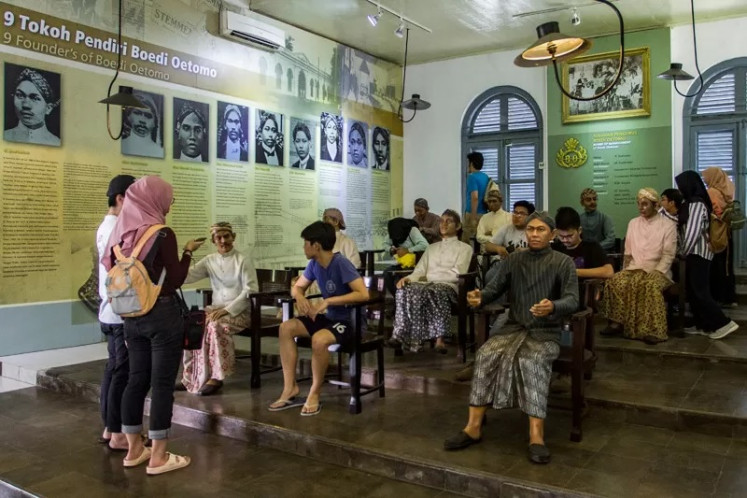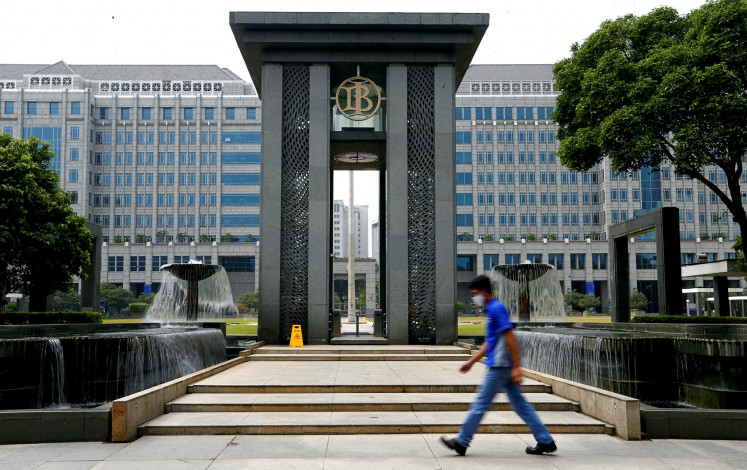Drone photography walks fine between art, aviation safety
The rising popularity of drone photography has allowed Jakartans to appreciate the beauty of the capital from up above
Change text size
Gift Premium Articles
to Anyone

T
he rising popularity of drone photography has allowed Jakartans to appreciate the beauty of the capital from up above. However, flying drones for this purpose brings the art of aerial photography head to head with aviation safety regulations.
Regardless of the fun of seeing things from up above, there are rules that drone pilots must obey to ensure their drones do not pose a danger to other flying objects and to the people underneath them.
Instead of seeing these rules as a limitation to do his hobby, Gading Drone Photography (GDP) founder and head Sute Darmawijaya sees them as serving a greater good.
GDP was founded in 2017. It began with a group of drone owners who lived in Kelapa Gading, North Jakarta, and wanted to share the experience of their hobby.
GDP quickly expanded and now has 57 members from various cities, most of whom are residents of Greater Jakarta.
“Yes, it's an exciting activity, but every drone pilot should put safety as a priority. Don't let your ego put your in trouble or other people in danger," Sute said.
“Some pilots are arrogant; they insist on flying their drones more than the maximum height or in restricted areas. I knew someone who, at an event, flew his drone to a higher altitude than a helicopter flying in the area. Imagine the potential disaster he might have caused,” he explained.
In Indonesia, drones — also referred to as unmanned aerial vehicles — are regulated under the Transportation Ministry's air navigation directorate, namely Law No. 1/2009 on aviation activities and Ministerial Regulation No. 47/2016 on the operation of unmanned aerial vehicles.
The regulations stipulate a maximum altitude, flight permits, pilot certifications, registration of drones and area categorizations. According to the laws, a drone can only fly up to 150 meters from the ground. Restricted areas in the capital include the air over and around airports, the State Palace and the National Monument (Monas) area.
A violation could lead to a fine of up to Rp 1 billion (US$70,000) or three years of prison.
Flying drones as a hobby and for recreational purposes does not require a license. However, Sute said drone pilots should at least become a member of the Indonesian Aerosport Federation (FASI) under the Indonesian Air Force.
Once someone masters the basic knowledge of drone-flying and is able to control their ego, Sute said capturing images from the air could be a lot of fun.
He further called on drone pilots, who do it as a hobby and a profession, to join his community.
“For me, drone photography requires at least two people,” the 46-year-old said.
“While the first person is responsible for controlling the drone’s movements with the remote control, the other is in charge of directly monitoring the drone and warning the pilot if the device goes too far or too high.”
Among Jakarta’s drone pilots who have discovered the benefits of being part of a drone community is Rifky Widianto.
Starting out as an amateur photographer using only his mobile phone, Rifky has had several of his drone pictures published on popular photography sites and bought by companies for promotional purposes.
“Seeing things from such a high angle has given me a lot to explore. I can play with horizontal objects and imagine them as three-dimensional objects,” he said while showing a picture of people posing on a pelican crossing on
Jl. Thamrin, Central Jakarta.
His subjects were lying down on the road. They used the pelican crossing’s pattern and pretended to climb the stripes like climbing a ladder.
By joining a community, Rifky said he has made many new friends who supported and reminded each other to be professional, though most of them flew drones for fun.
He was even encouraged to enlist in FASI and take a certification program.
“I once rejected an offer for taking photos for documentation of an event near Soekarno-Hatta airport. Money can’t blind me; I should always respect the rules,” Rifky said.
Studies have shown that drones can cause more damage to aircraft than a bird strike because of the materials that make up its components. Drone batteries and cameras, for example, are made of heavy plastics and metal.
Such materials may cause fatal damage mid-air by ripping the aircraft’s wings, windscreens and engines or even spark a fire with their lithium batteries.
Therefore, the Indonesian Air Force is very strict about aviation regulations. It is also highly concerned about privacy when it comes to state officials.
During the opening and closing ceremonies of the 2018 Asian Games in Gelora Bung Karno (GBK) Main Stadium in Senayan, Central Jakarta, Air Force personnel brought down several drones that were flying illegally over the Senayan area.
“[The device] we use to [bring down drones] is like a gun, but with this, we are shooting radio waves at the drones,” Indonesian Military commander Air Chief Marshal Hadi Tjahjanto said as quoted by tempo.co before the start of the sporting event.
The radio waves disrupt the drone’s signal, taking over its controls and landing the device.


